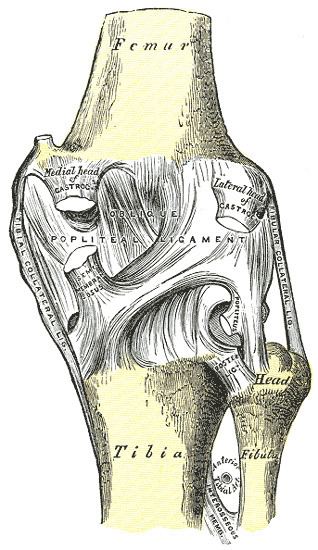Dorlands
/Elsevier l_09/12492857 FMA 44582 | TA A03.6.08.013 | |
 | ||
From lateral epicondyle of the femur, lateral condyle of femur To medial condyle of tibia Latin ligamentum popliteum obliquum | ||
The oblique popliteal ligament (posterior ligament) is a broad, flat, fibrous band, formed of fasciculi separated from one another by apertures for the passage of vessels and nerves.
It is attached above to the upper margin of the intercondyloid fossa and posterior surface of the femur close to the articular margins of the condyles, and below to the posterior margin of the head of the tibia.
Superficial to the main part of the ligament is a strong fasciculus, derived from the tendon of the Semimembranosus and passing from the back part of the medial condyle of the tibia obliquely upward and lateralward to the back part of the lateral condyle of the femur.
The oblique popliteal ligament forms part of the floor of the popliteal fossa, and the popliteal artery rests upon it.
